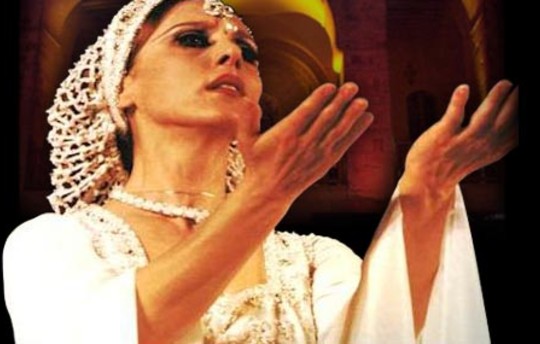Your Cart is Empty

The city of Damascus has long been seen as one of the greatest cultural cities of the Arab world. Today, however, despite no shortage of fine musicians, there are very few opportunities for performance. The complex rhythmic and melodic patterns of the old Andalusian repertoire has largely given way to the Egyptian style al-jeel music played on electric instruments.
George Wasoof is considered the biggest Syrian star of popular Arab song today, drawing as he does upon a mix of classic Egyptian song and Syrian and Levantine folk melodies.
The younger generation of performers in Damascus are represented by Nur Mahana and Mayada el Hennawy. While Mahana is known for pop sound of his music, Mayada combines Egyptian and Turkish influences with an instantly recognisable Syrian style.
Syria’s second city, Aleppo is also known as a hotbed of fine music, especially muwashshah (lit. Decorated), a form of sung poetry which draws on the Levantine mawlawi sufi ideology, as exemplified by Sabri Moudallal.
Another native of Aleppo is Sabah Fakhri, Syria’s major musical export to the Arab world, an artist best known for his performances of nagham al ams (melodies of the past), and his international tours.
The most prominent practitioner of Syrian classical music is French convert to Islam, Jalal Edinne (born Julien Weiss). Best known for his performences on the Arab zither, the qanum, he has recorded and toured extensively with Ensemble Al-Kindî, and the singers Sabri Moudallal and Sheikh Hamza Chakour.
Lebanon’s capital, Beirut, was known in the days following the Second World War as the ‘Paris of the Middle East’, producing numerous female singing stars such as Fairuz, Sabah, and Wadilh al-Safi, who sang and played the oud (a form of Arabic lute). Of these, the most prominent artist was Fairuz, who made her way from chorus singer to international solo singing star, best known for her interpretations of classical Arabic song.
Other prominent singers in the years following the civil war are Walid Tawfiq, who combines French and Arabic languages in his music, and Rageb Alama, a singer considered to belong more in the pop category than Classical Arab songs.
The primary influence on much Jordanian music is the Bedouin heritage of the people. A common form of music in this country is zajal, which consists of improvised poetry accompanied by mijwis or yaghulreedpipes or the single-stringed rabab. The young Bedu pop singer Omar Abdullat scored a rare homegrown hit with his patriotic “Hashemi, Hashemi”. His style owes as much to the Arabian Peninsula as to the Levant, a trait seen to relate to the nomadic nature of the Bedouin.
Considered by many to be the home of Arabic music, many of the most promising young players from all over the Middle East still come to study at the Baghdad Institute. In recent years, Iraq’s musical profile has been greatly enhanced by the European and American tours of virtuoso oud player, Munir Bashir. In addition to Arabic classical music, Iraq has produced numerous stars of Arabic popular music, the most prominent being Kazem al Saher, despite being forced to leave the country forcefully in the early 1990s.